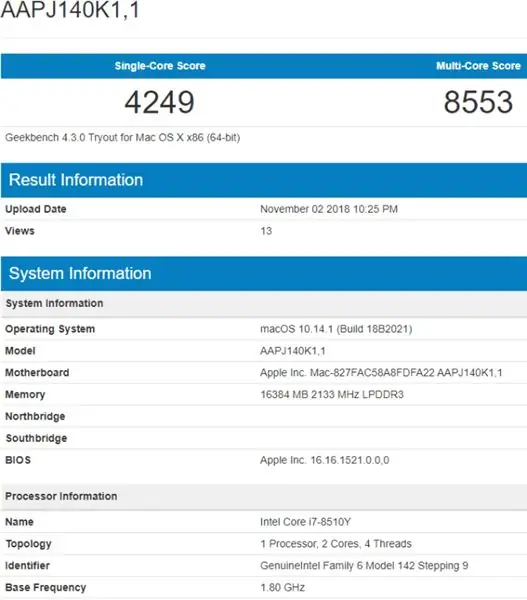As you know, in the iPhone of any generation, you cannot put music from the audio collection on calls. The standard set of calls, which does not even consist of music, but of sounds, becomes boring very quickly. The official firmware does not allow you to download ringtones to iPhone for free.
Instructions
Step 1
To set music for calls on iPhone, you need to upload an mp3 file to iTunes. In the upper left corner, click on the note icon. The "Music" section will open in the application. If you have not previously uploaded mp3 files to iTunes, then this section will be empty. Click the "File" key in the upper left corner. From the menu that opens, select "Add File to Library".

Step 2
In the window that opens, select all the tunes you want to download. You can upload both individual files and entire albums. Click the "Open" button. After that, the media library will be formed. If you did not see the files that you added, then just click on the existing album and the songs will appear at the bottom of the window.

Step 3
The iPhone accepts only melodies no longer than 40 seconds for a call. Therefore, the next step will be to shorten the mp3 file. This can be done using various applications for the phone. Including the reduction of the melody can be done in iTunes. Right-click on the music you want to shorten to 40 seconds. Select the "Details" tab. She will be the fourth on the list. In the window that opens, go to the "Parameters" tab. Here it is possible to specify exactly the fragment of the recording that is necessary for playback. Check the box next to the word "Stop" and in the window on the right, enter the number of required seconds. After that press the "OK" button. Visually, this file has not changed in any way. Now you need to change the current audio recording format.

Step 4
For iTunes 12.4.0, you can change the audio format using the menu. To do this, just click on the audio recording, shortened to 40 seconds, with the right button and select from the drop-down menu the item to create the aac version.
Step 5
For iTunes versions 12.5.1 and higher, the required item in the audio file menu section has been removed. Now, to convert a file to aac format, you need to go to the "File" section in the upper left corner of the application. Next, you need to move the mouse over the "Create a new version" item and select the third item in the submenu that opens.
Step 6
Immediately after clicking the "Create aac version" button, file conversion will begin. As a result, you will get a file with the same name and artist, but with a completely different duration. If all points of the instructions were followed correctly, then the duration of the melody will not exceed 40 seconds.
Step 7
Now you need to change the extension of the musical composition. To do this, right-click on the required file and select "Show in windows explorer" from the drop-down menu. Initially, the audio recording is in the.m4a format. In order to put this melody on a call, you will need to receive the.m4r format. That is, you just need to change the letter "a" to the letter "r". If you cannot see the extension of the audio file in iTunes, you need to do the following in the explorer: select the "Service" tab. After that, select the item "Folder Options" and go to the "View" section. Uncheck the box next to the item on hiding the extension for registered file types. Then press ok. Now you can change the format of the ringtone.
Step 8
Do not cover the conductor. To make it easier to find the file you need for the melody, copy it and save it where you can easily find it later. Return to the iTunes app and click on the ellipsis in the top bar. In the list that appears, select the "Sounds" item. Now you need to transfer the previously prepared ringtone file to the iTunes window. If you did not save it in your folder, then by default the processed file was saved in the iTunes folder located in the My Music folder on the C drive.
Step 9
The next step is to sync your phone with iTunes. To do this, you need to connect the iPhone with a usb wire to the computer where the application is installed. In iTunes, you need to find the phone icon in the top bar and click on it. In the sidebar of the application, go to the "Sounds" tab. A window will open to the right where you will need to synchronize sounds by clicking on the window next to the record of the same name. After making changes, you must click "Apply". If you forget to do this and close the window, then the changes will not be made. If all the actions were performed correctly, now you can easily put the converted melody on a call to the iPhone.
Step 10
In order for the previously changed melody to be put on the call, you must install it. To do this, select the "settings" or "Settings" item in the phone. In the window that opens, select the "Sounds" item and in the next window select the "Ringtone" item. By default, all iPhones have a melody called a marimba. Instead, select the file with the ringtone that has been converted to iTunes and transferred to your phone.
Step 11
In this way, iPhone owners can set a melody not only for all calls, but also make individual ringtones for numbers. To do this, you need to select an entry with the subscriber for whom you will need to change the ringtone in the phone contacts. Having opened the information with him, click on the "Change" icon. At the very bottom of the editing tab there will be a window with a ringtone. Instead of the "Default" item, you must select a file in the.m4r format. After that, when calling from this subscriber, you will hear a unique melody and will not confuse your call with anyone else.
Step 12
If all these steps for setting an individual ringtone on the iPhone seem overwhelming to you, then you can make it easier: download the ringtone from the iTunes store. Unfortunately, you will not be able to find rare melodies there, but you can easily download popular audio files to your phone. But such an easy way to set a ringtone to a ringtone on an iPhone will cost money. But the unique melody will make you stand out from all the owners of phones with an apple.






